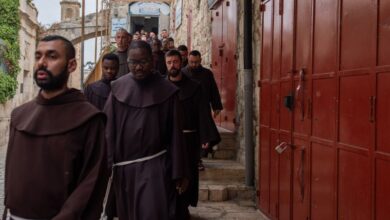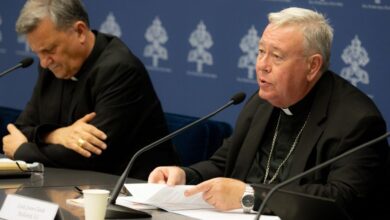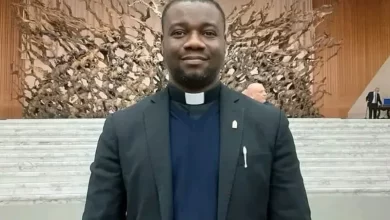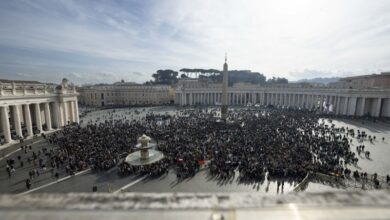3 Marian holy sites in the Muslim nation of Indonesia
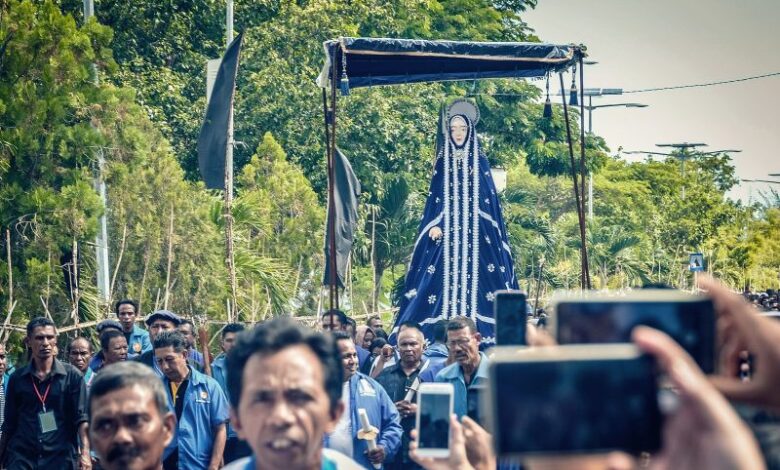
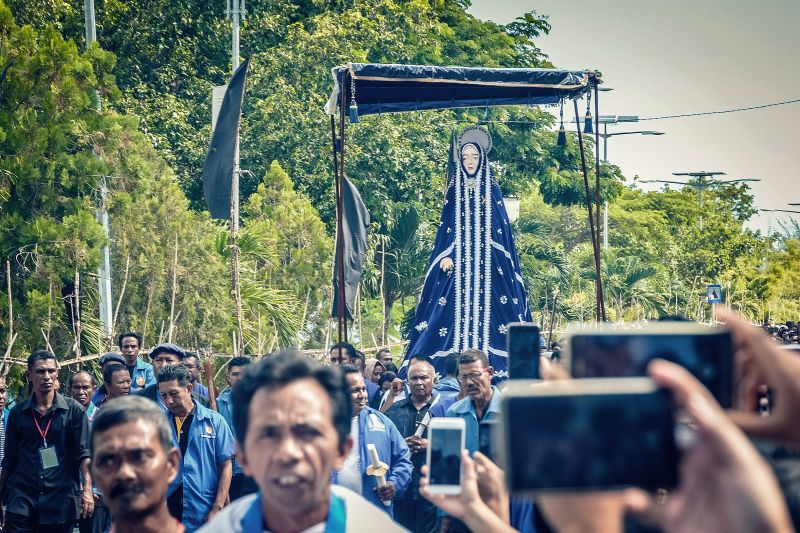 The Tuan Ma statue is paraded around Larantuka City during the Semana Santa Holy Week celebrations on Flores Island. / Credit: Alfonso Giostanov, CC BY-SA 4.0, via Wikimedia Commons
The Tuan Ma statue is paraded around Larantuka City during the Semana Santa Holy Week celebrations on Flores Island. / Credit: Alfonso Giostanov, CC BY-SA 4.0, via Wikimedia Commons Rome Newsroom, Aug 11, 2024 / 06:00 am (CNA).
Across the world’s most populous Muslim nation of Indonesia, Catholics can find oases of prayer and devotion. The Catholic faith, through prayerful processions and rituals, has continued in the country for more than 500 years.
Records dating back to the 16th century indicate that the first Catholic traditions in Indonesia were established following the first reported apparition of the Virgin Mary.
The first ‘Mother Mary’ procession on the island of Flores
The Catholic history in Indonesia begins in Flores, an island in the eastern part of country, with the story of a young boy named Resiona who reportedly had an apparition of the “Queen of the Rosary” on Larantuka beach in 1510 right before finding a statue of Our Lady washed ashore, most likely from a sunken Portuguese ship.
“Resiona was looking for snails when he saw a beautiful lady standing in front of him. He asked her name and where she came from but she didn’t answer him,” said Father Fidelis Bolo Wotan, a doctor of dogmatic theology with a specialization in Mariology, in an interview with CNA.
“The woman wrote three words in the sand that the boy didn’t understand. The three words were ‘Akulah Reinha Rosari’ [‘I am the Queen of the Rosary’]. After some time, when he raised his head, he saw a beautiful wooden statue.”
When Portuguese Dominican missionaries arrived in Flores about 50 years after the apparition, they were amazed to find the wooden statue of Our Lady placed in a “korkay” (a local temple) and given offerings by the people of Larantuka during harvest time.
The Dominican brothers proceeded to explain the meaning of the statue and taught the people the rosary. Together with the local Larantukas, the Dominicans organized the first Tuan Ma (Mother Mary) processions during Holy Week, which, to this day, is a tradition held in Flores in the Diocese of Larantuka.
“In the past, the missionaries looked for a simple way to announce the Gospel of the Lord so the instrument they used was the procession of the statue of the Blessed Virgin Mary during Semana Santa [Holy Week],” Wotan explained. “The rosary was the main tool the missionaries used to teach the people how to live their faith.”
The Annuario Pontificio 2019 (the annual report of the Holy See) reports that 80% of the Flores population is Catholic, a significant figure considering Catholics account for just 3% of Indonesia’s total population. (Approximately 87% of Indonesians are Muslim.)
According to Wotan, the harmonization of religion and piety with local cultures within Indonesia has, and continues to be, key for the growth of the Catholic Church in a country with approximately 280 million inhabitants spread across 17,500 islands.
The Cave of Holy Mary in Java
Java, the central island on which Indonesia’s capital, Jakarta, is located, is also home to the renowned Catholic pilgrim site Gua Maria Sendangsono (the Cave of Holy Mary) in Yogyakarta.
Catholics from across the country are attracted to this pilgrimage site, especially in May and October, as it is believed the cave, which is located inside the religious complex and is marked by a large Virgin Mary statue, is a place of physical healing as well as peace and prayer, according to an Indonesian tourism website.
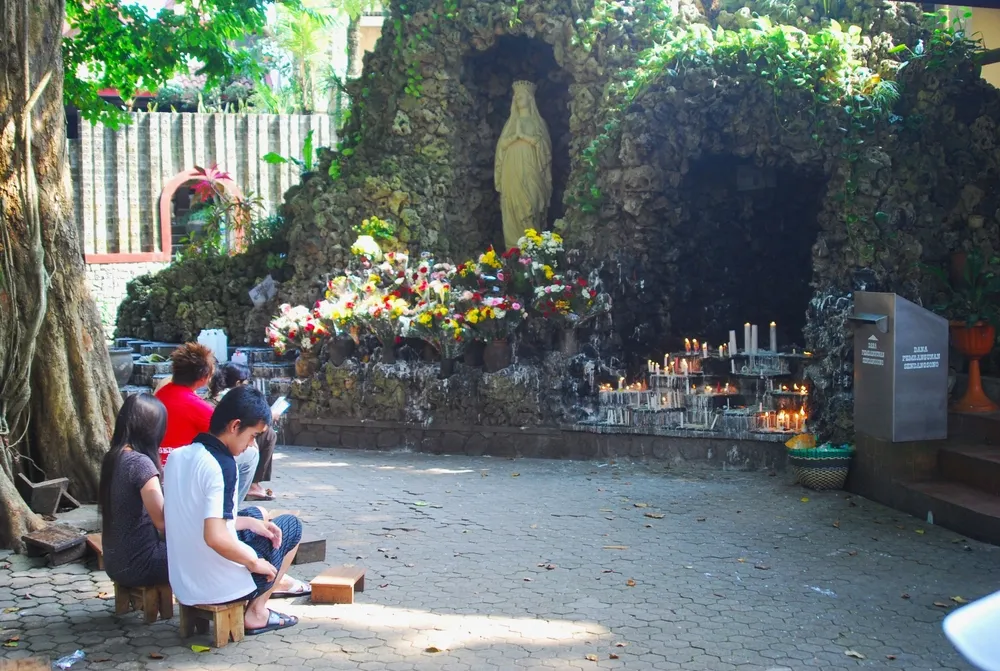
While Portuguese Dominican missionaries were prominent evangelizers in the eastern part of the country, the Dutch Jesuit missionary Father Frans van Lith is considered the founder of the Catholic Java mission. He arrived at the turn of the 20th century and baptized the first Javanese Catholics.
According to historians Karel Steenbrink and Jan S. Aritonang in their book “A History of Christianity in Indonesia” (2008), van Lith was a strong advocate for Javanese society and culture and believed Indonesians should have the ability to be religious, educational, and political leaders in their country independent of colonial rule.
The influence of Van Lith among the Javanese also led to the construction of the Gua Maria Sendangsono, which was completed in 1929 and inaugurated on Dec. 8 of the same year. The main features of this pilgrimage site are the statue of Our Lady, which was gifted by the queen of Spain, and the fresh spring inside the cave, which people claim is holy and can cure people of illness.
Our Lady of Good Health shrine in North Sumatra
More recently, in North Sumatra, a province on the western side of Indonesia, the Graha Maria Annai Velangkanni (dedicated to Our Lady of Good Health) was constructed between 2001 and 2005 to support the Tamil Catholic community living in Medan. The “Indo-Mughal” design of the shrine makes it look like a “church, temple, and mosque all in one.”
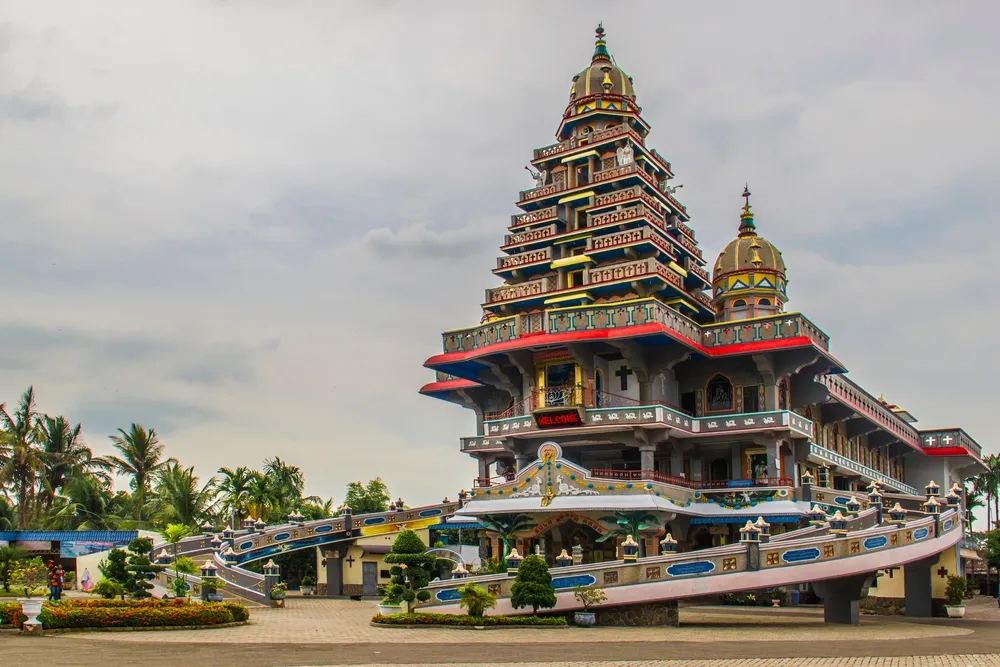
According to the shrine’s website, Father James Bharataputra, a Jesuit priest from India who served in Indonesia for more than 50 years, wanted the shrine to be a unique place “where Catholics can reinforce their faith and non-Catholics can experience and learn about another faith in an environment where their respective faith is also represented in the features of the building.”
Two Franciscan Capuchins — Archbishop Alfred Gonti Pius Datubura and Coadjutor Archbishop Anicetus Antonius Sinaga — inaugurated the shrine in October 2005.
“More than 3,000 people from several ethnic groups attended the celebrations and among them were 200 foreign pilgrims from Malaysia, Singapore, and India,” Sister Angelina, a member of the Kongregasi Suster Santu Yosef (KSSY) in Medan, told CNA.
“Many people visit the shrine each year — 15,600 people,” she said. “People are attracted to come to Graha Maria Annai Velangkanni because the Marian shrine is very unique, special, and the prayers of people who come are answered.”
Pope Francis is scheduled to visit Indonesia, the first stop on his Asia-Pacific trip, on Sept. 3–6.


